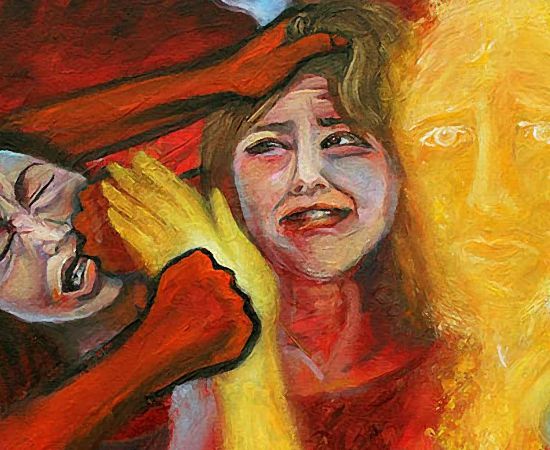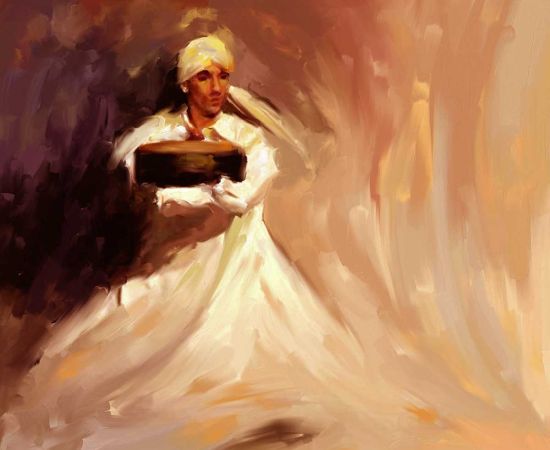More Coverage
Twitter Coverage
Satyaagrah
Written on
Satyaagrah
Written on
Satyaagrah
Written on
Satyaagrah
Written on
Satyaagrah
Written on
JOIN SATYAAGRAH SOCIAL MEDIA
"Reviving Ancient Wisdom": Amidst confusion, NCERT's curriculum revamp hints at major shifts; introducing epics like Ramayana, Mahabharata, and renaming India as Bharat in textbooks, reflecting Modi's governance style of bold, unforeseen reforms

In a significant development regarding India's educational curriculum, a high-level committee set up by the National Council of Educational Research and Training (NCERT) has put forward a series of recommendations for the school curriculum in social sciences. CI Issac, the chairperson of the committee, announced on Tuesday that they have proposed the inclusion of epic narratives like the Ramayana and Mahabharata in textbooks. Additionally, the committee has suggested that the Preamble of the Indian Constitution should be written on classroom walls.
|
This seven-member committee was formed last year with the objective of revising and updating the social science curriculum for schools. Their recommendations form a crucial part of the final position paper on social sciences, a foundational document that will guide the development of new NCERT textbooks. This paper encompasses key educational directives and is instrumental in shaping the course of social science education in the country.
The suggestions made by the committee will now be considered by the 19-member National Syllabus and Teaching Learning Material Committee (NSTC), which was notified in July. The NSTC is responsible for finalizing the curriculum, textbooks, and learning materials for social science classes. The inclusion of these epic narratives, integral to Indian culture and heritage, in the school curriculum is seen as a move to deepen students' understanding of their cultural roots and heritage. The committee's recommendations, if accepted, could mark a significant shift in the approach to teaching social sciences in India, potentially enriching the curriculum with a blend of historical, cultural, and ethical dimensions drawn from these ancient texts.
The National Syllabus and Teaching Learning Material Committee (NSTC) has recently established a Curricular Area Group (CAG) for Social Science. This group is tasked with developing the syllabi and teaching-learning materials for the subject, a significant step towards revamping and enhancing the social science curriculum.
|
CI Issac, chairperson of the high-level committee constituted by NCERT, underscored the importance of incorporating the Ramayana and Mahabharata into the social science syllabus for students in classes 7 to 12. He stated, “The committee has insisted on teaching epics like Ramayana and Mahabharata in the social science syllabus to students. We think that students in their teenage years build their self-esteem, patriotism and pride for their nation." Issac linked the teaching of these epics to the development of patriotism among students, noting that a lack of such sentiments has led to many seeking citizenship in other countries. He emphasized the need for students to understand their roots and develop a love for their country and culture.
Further, Issac addressed the current treatment of these epics in some education boards, saying, “Although some education boards presently teach Ramayana to students, they teach it as a myth. What is a myth? There is no purpose of the education system if the students are not taught these epics, and it will not be nation serving.” His comments highlight a desire to shift the perspective from viewing these texts as mere myths to recognizing them as foundational cultural and historical narratives with significant educational value.
The committee's emphasis on teaching these epics reflects a broader vision of education that goes beyond academic knowledge to include cultural and national identity formation. These recommendations, if implemented, could lead to a significant transformation in the way social sciences are taught in India, potentially fostering a deeper connection among students to their cultural heritage and national identity.
CI Issac, the chairperson of the NCERT committee on social sciences, has provided insights into the proposed changes in the social science curriculum. He pointed out a perceived imbalance in the current curriculum, particularly in the teaching of modern history, which he believes is predominantly centered around the British rule. Issac noted, "Many national heroes did not find any mention...There is almost no mention of the Vedic age...File is with Govt now. Response has been positive." This statement suggests a push towards a more inclusive historical narrative that acknowledges different epochs and figures in Indian history, particularly those from the Vedic age, which is currently underrepresented.
|
Issac also highlighted the committee's recommendation to replace the name ‘India’ with ‘Bharat’ in school textbooks, advocating for the introduction of ‘classical History’ instead of ancient history in the curriculum for classes 3 to 12. He believes that the name ‘Bharat’ instills a sense of pride in children, which underpins the rationale for this recommendation. This change aims to strengthen national identity and pride among students by using a name that resonates more deeply with Indian heritage.
Addressing the potential opposition to these recommendations, Issac draws parallels with the renaming of cities in India. He says, “The people, who have opposition to the suggestion, have changed the name of Madras to Chennai and Trivandrum to Thiruvananthapuram. They want to change Kerala to Keralam, but when we say Bharat, why do they have a problem?” This comparison is used to question the resistance to using ‘Bharat’, suggesting that it aligns with the broader trend of reverting to indigenous names as a means of reclaiming cultural identity.
Issac's comments reflect a broader vision of the NCERT committee to revitalize the social science curriculum by incorporating elements that emphasize India's rich cultural and historical heritage. These proposed changes aim to foster a deeper connection among students to their national identity and cultural roots, while also addressing gaps and imbalances in the current educational narrative.
|
CI Issac, chairperson of the NCERT committee on social sciences, has been vocal about the significance of the name 'Bharat' in the context of India's history and heritage. He elaborated on the historical depth of the name, saying, “The name Bharat is at least 7,000 years old. When children hear this, when they hear about our rich history and heritage, they will feel proud. The name India is only about 150 years old." This statement emphasizes the ancient roots of the name 'Bharat', contrasting it with the relatively recent adoption of the name 'India'.
Issac explained that the committee has proposed that the name 'Bharat' should be introduced in social sciences textbooks for classes 7-12. This suggestion is part of a broader vision to familiarize students with the historical name of their country. He clarified the intent behind this recommendation in the context of the new education policy, stating, “We wanted the next generation to learn the name Bharat. As we were taught India, we are only saying that. We never said India should not be used." This clarification highlights that the recommendation is not about replacing 'India' but rather about including 'Bharat' to enhance students' understanding of their country's historical identity.
The recommendations, which were put forward in 2021 by the seven-member committee chaired by Issac, represent an effort to integrate India's ancient heritage into its educational system. The emphasis on teaching the name 'Bharat' reflects a desire to instill a sense of historical pride and national identity in students. By acquainting them with the ancient name of their country, the committee aims to foster a deeper connection to India's rich cultural past and its long-standing civilizational legacy. This approach underlines the importance of education in shaping national identity and highlights the role of curriculum in connecting the younger generation with their heritage.
CI Issac stated, “The recommendation to include Ramayana and Mahabharata in the syllabus was also made earlier. The committee has not made any fresh recommendations.” This statement indicates that the suggestion to introduce these epics into the syllabus is not new and has been a consideration in the past, reflecting an ongoing effort to incorporate these significant cultural narratives into the educational framework.
Issac also delved into the reasoning behind another recommendation made by the committee: writing the Preamble of the Indian Constitution on classroom walls. He explained, “Our Preamble is noble. It gives importance to social values including democracy and secularism. Therefore, we have recommended writing it on the walls of the classrooms so that everyone can understand and learn from it.” This recommendation is aimed at instilling a deeper understanding and appreciation of the Constitution's principles among students. By having the Preamble visible in classrooms, students can continually be reminded of the core values and ideals that underpin Indian democracy.
The ongoing revision of the school curriculum by NCERT is in alignment with the National Education Policy (NEP) 2020. This comprehensive overhaul aims to update and enhance the educational content to make it more relevant and holistic. The new NCERT textbooks, reflecting these changes, are expected to be ready by the next academic session. This timeline suggests an imminent implementation of these updates, marking a significant shift in the way social sciences and other subjects will be taught in Indian schools. The inclusion of cultural epics and the emphasis on constitutional values are indicative of a broader educational philosophy that seeks to blend cultural heritage with modern democratic principles.
|
NCERT Denies Reports Claiming ‘Ramayana, Mahabharata Will Be Taught as Part of History in Schools’; Details
In a significant development, the National Council of Educational Research and Training (NCERT) has officially denied claims that the Ramayana and Mahabharata will be included in the school syllabus as part of history. This clarification came on Wednesday, 22nd November, countering widespread reports that these changes were proposed by "a high-level committee constituted by NCERT and chaired by CI Issac."
These reports had gained considerable traction in the media, with numerous outlets stating that the recommendation to include these epics in the history syllabus came from a high-level panel. The NCERT's refutation of these claims brings clarity to a matter that had generated significant public and media interest.
Furthermore, it was reported that the Social Science Committee, led by Professor CI Isaac, had proposed several changes to the current course of study. This included a suggestion to restructure the history syllabus into four distinct segments. However, with NCERT's recent statement, it becomes clear that the inclusion of the Ramayana and Mahabharata as historical subjects in the curriculum was either misreported or misrepresented.
NCERT's denial of these reports indicates a discrepancy between the committee's recommendations and how they were subsequently interpreted or reported in the media. This development highlights the complexities involved in educational policy-making and the importance of accurate reporting in matters of public interest, especially when it pertains to educational reforms and curriculum development. The clarification from NCERT serves to dispel confusion and ensures that the public discourse on curriculum changes remains grounded in verified information.
According to a recent report by NDTV, NCERT has refuted the claims regarding the inclusion of the Ramayana and Mahabharata in the school history syllabus. They stated that there is no such panel as the one reportedly led by Professor CI Issac and clarified that “whatever Isaac is saying is in his personal capacity.” This statement from NCERT distances the organization from the earlier reported recommendations and suggests that Issac's comments were made as individual views rather than official NCERT policy.
Earlier, Professor CI Issac, in conversation with ANI, discussed the 'recommended changes' to the history curriculum. He was quoted as saying, “The panel has made recommendations for the classification of history into four periods: the classical period, the medieval period, the British era, and modern India. Till now, there have been only three classifications of Indian history - ancient, Medieval, and modern India.” This statement suggests an effort to add a new dimension to the study of Indian history by introducing a 'classical period.'
Issac further elaborated, “Under the classical period, we have recommended that Indian epics–Ramayana and Mahabharata–be taught. We have recommended that the students have an idea of who Rama was and what his purpose was. A little bit about the epic.” This clarification indicates that the committee's intention was to familiarize students with these epics as part of the proposed 'classical period' rather than as historical accounts per se.
NCERT's denial and Issac's explanation portray a complex picture of the curriculum revision process, highlighting the challenges in aligning individual recommendations with official educational policy. The differing narratives between NCERT's official stance and Issac's comments emphasize the need for clarity and consensus in educational policy-making, ensuring that curriculum changes are both accurately represented and aligned with educational objectives.
|
Conclusion
The recent confusion surrounding the proposed changes in the NCERT curriculum, specifically the inclusion of Indian epics like the Ramayana and Mahabharata, echoes a familiar pattern observed in the Modi government's approach to policymaking. This administration is known for its bold, unexpected decisions, often catching both the general public and political insiders off guard. Historical precedents such as Demonetisation, the Abrogation of Article 370, the Surgical Strike, the Balakot Air Strike, and the legislation on Triple Talaq, all demonstrate this tendency.
The current ambiguity about the NCERT syllabus changes might well be a strategic move to gauge public reaction and sentiment before implementing significant educational reforms. There has been a longstanding call for the integration of Hindu scriptures and a broader reflection of India's rich cultural heritage in the education system. The recent developments suggest that the government might be testing the waters before making such sweeping changes.
Reflecting on the Modi government's track record, it's not unlikely that these educational reforms, if indeed planned, could materialize with the same decisiveness as witnessed in other major policy shifts. The construction of the Ayodhya temple, a monumental undertaking completed after 500 years, serves as a testament to the government's commitment to fulfilling long-standing cultural and historical aspirations.
In this context, the NCERT curriculum changes, if implemented, could represent another step in this direction, fulfilling a longstanding desire to more deeply embed India's cultural narratives into its education system. Such changes, while undoubtedly controversial, could be part of a broader strategy to reinforce national identity and pride among India's youth by connecting them more intimately with their heritage.
|
 Support Us
Support Us
Satyagraha was born from the heart of our land, with an undying aim to unveil the true essence of Bharat. It seeks to illuminate the hidden tales of our valiant freedom fighters and the rich chronicles that haven't yet sung their complete melody in the mainstream.
While platforms like NDTV and 'The Wire' effortlessly garner funds under the banner of safeguarding democracy, we at Satyagraha walk a different path. Our strength and resonance come from you. In this journey to weave a stronger Bharat, every little contribution amplifies our voice. Let's come together, contribute as you can, and champion the true spirit of our nation.
 |  |  |
| ICICI Bank of Satyaagrah | Razorpay Bank of Satyaagrah | PayPal Bank of Satyaagrah - For International Payments |
If all above doesn't work, then try the LINK below:
Please share the article on other platforms
DISCLAIMER: The author is solely responsible for the views expressed in this article. The author carries the responsibility for citing and/or licensing of images utilized within the text. The website also frequently uses non-commercial images for representational purposes only in line with the article. We are not responsible for the authenticity of such images. If some images have a copyright issue, we request the person/entity to contact us at This email address is being protected from spambots. You need JavaScript enabled to view it. and we will take the necessary actions to resolve the issue.
Related Articles
- Hijab row refuses to cool down, as similar controversy has occurred in another college in Karnataka: Hindu Students turn up with saffron scarves protesting against Muslim girls wearing Hijab in classroom
- Dangers of losing our identity: Guru Tegh Bahadur forgotten and Aurangzeb being glorified
- Toxic Western ideologies being pushed into Indian schools via promoting LGBT and gender politics propaganda among children
- Oops… NCERT did it again: A predictable textbook case of Indian history howlers
- ‘Inappropriate question’ on Gujarat riots asked in class 12 sociology exam: CBSE promises strict action
- Sonam Kapoor steps in to support Woke ‘activists’ over NCERT controversy, dragged the RSS too
- Theft on a Grand Scale - Britain stole $45 Trillion from India and lied about it. Indian money developed Britain and Other Countries
- Calcutta Quran Petition: A petition to ban the Quran altogether was filed 36 years ago, even before Waseem Rizvi petitioned for removing 26 verses from Quran
- After several decades and millions of students learned that "Priests divided people into Varnas, did not allow Shudras & women to study Vedas", NCERT removes misleading claims about Brahmins after they couldn't provide any evidence in a response to an RTI
- In a historic decision Gauhati HC says, ‘Govt funded schools can’t impart religious education’: Upholds the constitutionality of the law by the Assam govt to convert state-run Islamic madrassas into schools
- "Knowledge is the eye of desire and can become the pilot of the soul": Modi Govt informs Lok Sabha that Bhagavad Gita is now part of textbooks for Class 6th & Class 7th, shlokas from Bhagavad Gita and knowledge from Vedas to be included in NCERT
- "Children have never been very good at listening to their elders, but they have never failed to imitate them": 4-year-old girl “Charlie Danger” Lloyd from British Columbia, Canada announces her ‘gender transition’ with her grandmother at ‘pride’ parade
- Santi Ghosh and Suniti Choudhury: Two Teenage Freedom Fighters Assassinated British Magistrate
- 'Saffronization of historical research': When all Media outlets screamed the propagandist headline of new pall-bearer of secularism that ICHR was packed with “sympathizers" and claimed that authentic MoA of 1972 was changed from Rational to National
- Anything atrocious and we have Hindu identity to merit, but for the good, we have a tough choice: Mughals, British, or Nehru




























